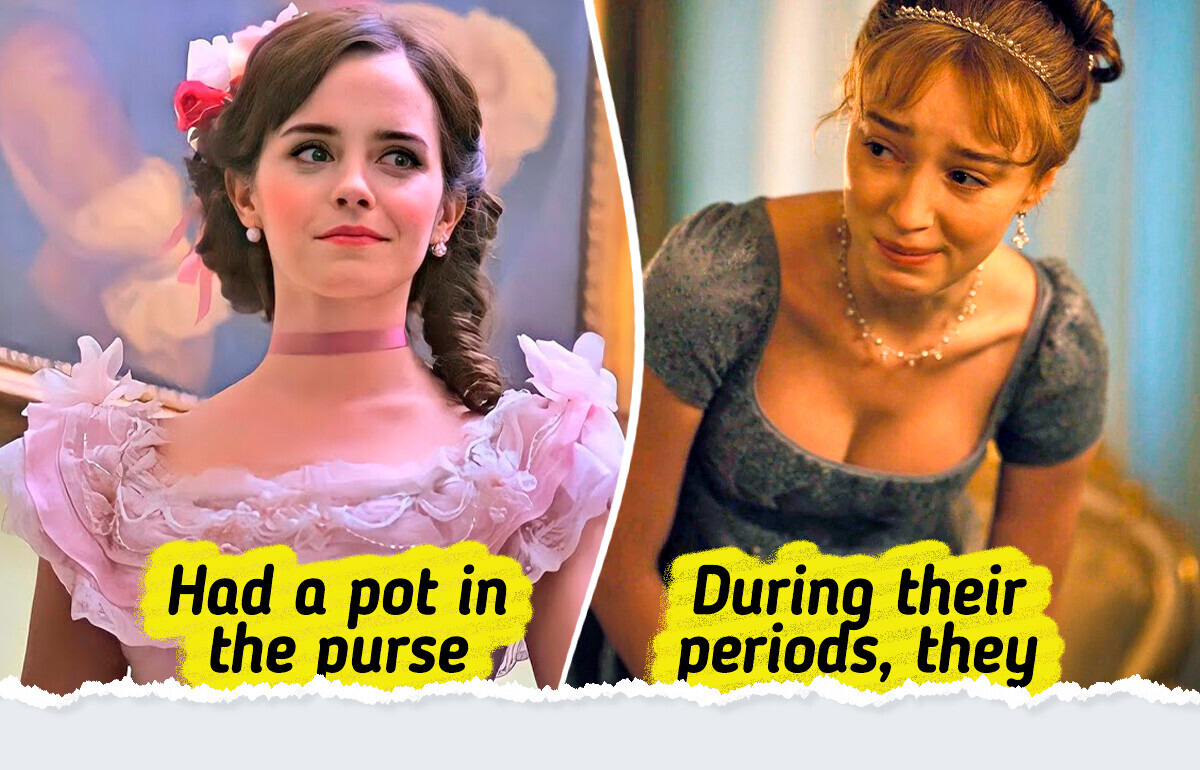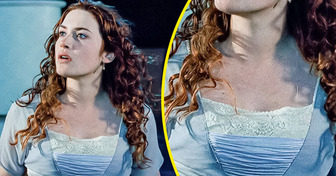“She Looks Like Everyone Else,” J.Lo Was Heavily Criticized for Looking Different in Real Life Than She Does on Instagram


Our understanding of the past is often shaped by films and novels, but these stories rarely reflect the full picture. Instead, they present a polished, romanticized version of history — one that glosses over the gritty details, unusual customs, and perplexing social rules that once defined daily existence. Beneath the surface of these idealized portrayals lies a world that was far stranger and more complicated than we’re often led to believe.
Despite the fact that now in modern society there are no stereotypes about dancing, in the Victorian era, the choice of dances was approached with special strictness. Those times were dominated by strict morals, and the dances had to reflect the spirit of morality and modesty.
Everything was permissible, except the waltz. That was the height of indecency. It was strictly forbidden, partners stood too close to each other, there was a lot of body contact in the dance, and spins, during which the gentleman lifted an unmarried girl in his arms, could damage her pure reputation.
It required a great deal of health to attend a ball. Balls started at around 9 p.m. and ended at dawn. The guests were also fed quite late. Therefore, those who didn’t have time or couldn’t have dinner before the ball were hungry until 1 o’clock in the morning.
The dresses were quite voluminous, and dancing in a crowded room was probably difficult. Also, for the sake of beauty, ladies resorted to various tricks. These included putting leeches behind their ears to achieve a pale complexion.
All the rooms for the ball had to be well lit. Before the advent of gas lamps, candles were used, and not ordinary candles, but those made of beeswax. They cost a lot of money — more than the food and drinks prepared for the party.
Hundreds of candles worked like a few 25-watt bulbs. Therefore, wall candelabras were decorated with crystal pendants, and mirrors were hung behind them. Otherwise, the rooms looked gloomy. And the candle flames burned oxygen mercilessly, carbon dioxide was released, and without proper ventilation, the guests became dizzy.
If a lady needed to use the toilet during a ball, one or more maids would wait in a designated room to help hold up her skirts. Women didn’t wear modern underwear; instead, they wore split-crotch drawers, which allowed them to relieve themselves without removing any clothing.
At Victorian balls, hosts often invited more guests than their ballrooms could accommodate. This was done with the expectation that some of those invitees would simply not show up.
This cunning technique created the feeling that the reception was successful, because there were really a lot of people in the rooms. A ball was considered big if it was attended by approximately a hundred people. And a reception with less than 50 guests was modestly called a “dance.”
In the Victorian era, young ladies couldn’t refuse a man if he asked them to dance. This response could not only be seen as disrespectful to the man, but could also offend the organizers of the event. This seemed as if the mistress of the house invited unworthy guests with whom decent ladies didn’t want to spend time.
But what to do if you still don’t want to dance with an intrusive suitor? You could say that all the places for men who wanted to dance with a lady were already taken. For this purpose, there were special cards where women wrote down the names of those with whom they would dance throughout the ball.
In addition to the ballroom, there should have been separate men’s and women’s dressing rooms. There, the guests left their outer garments. In addition, in the room intended for ladies, there were usually 2 maids on duty, who sewed torn clothes, corrected hairstyles and helped with other possible troubles. The wardrobe was usually placed on the first floor, so that the ladies didn’t have to run up and down the stairs.
It was also necessary to choose a room for more delicate needs. In the early 19th century, not all houses were equipped with a sewage system, so night pots and a maid, who was supposed to help the ladies cope with this process without affecting their outfits, were placed in a suitable room.
Pots were also placed in other strategic areas throughout the house, such as behind screens and in dark corners. If the need caught a guest by surprise during a meal, they could get up from the table and hide behind the curtains. And some young ladies came to the ball with their own bourdaloues and carried pots in their purses.
If there was no toilet nearby, women were helped by pockets. On women’s dresses, they were always quite deep, which allowed to discreetly massage the stomach and bladder and relieve the condition. There is a theory that to avoid peeing, women held on to the folds of fabric inside the dress and thus restrained themselves.
A fan was an important part of every young lady’s ball attire. Because of the many candles and crowds in the ballroom, it quickly became hot and stuffy. So, this accessory was simply necessary.
It not only saved the ladies from fainting, but also helped to communicate with admirers. In the 19th century, ladies couldn’t openly express their feelings, especially in the presence of other members of society. Therefore, they used a secret language.
If a lady held a fan in her left hand and waved it weakly, it meant that she wanted to get acquainted with the gentleman to whom the accessory was directed. When the fan was pressed to the forehead, it was a signal that someone was watching the couple. To express disgust and hatred for the interlocutor, the lady extended the fan through her clenched hand. If she waved the fan slowly, it meant that the woman was married.
The hostess was obliged to welcome all the ball guests. So, she had to stay at the door until dinner, or until all the guests had arrived. Usually, there was nothing difficult about it.
Difficulties arose only when a gentleman unknown to the lady appeared on the doorstep, invited to the party by her husband or one of her sons. The hostess couldn’t address this guest without proper introduction. Therefore, the husband or son always had to hang around. Daughters, on the other hand, were allowed to enjoy the fun in the ballroom.
In the 19th century, gloves were considered an essential part of a lady’s outfit. They were specially chosen a size smaller so that they would fit snugly, emphasizing thin and graceful hands. The length of gloves varied depending on fashion trends.
To appear at a ball with bare hands was considered extremely indecent. Gloves had to be exclusively white or soft pink in color. This accessory was also considered a very intimate attribute. It is known that Queen Victoria was extremely embarrassed when she had to lend her own gloves to her sister.
In addition, with the help of gloves, ladies could transmit secret signs to suitors. For example, to declare her love, a girl could drop both gloves and the message would become obvious.
One of the most important figures at the feast was the Dancing Master. It was he who made sure that the rules were followed during the dancing, announced the dinner and was responsible for all sorts of organizational matters.
Before the start of the ball, the Master met the guests at the doors of the hall and gave cards with numbers to all the ladies. An exception was made only for nobles. The young lady had to pin or tie the sheet in a visible place. The number meant what place the couple should take during the performance of the dance.
Ladies wore the number throughout the ball because, without it, they couldn’t dance. If someone lost it, they had to go to the Master for a replacement. Before the dance began, couples went into the circle one by one when their numbers were announced. If someone missed their appearance or was late, they had to take the last place.
In preparation for a ball, ladies paid a lot of attention not only to their outfits, but also to their hairstyles. To make their hair lush, they decorated it with “rats.” This was the name of strands that maids collected from the lady’s comb and rolled into homemade chignons. “Rats” matched the color of the hair and therefore didn’t stand out against the rest of the hair.
Shiny powder was applied to the hair. It was made of crushed gold or silver leaf. Only rich ladies could afford such mixtures. There were also cheap analogs, but they made the hairstyle look sloppy and the strands looked dirty.
Special attention was paid to various jewelry. Ladies wove natural and artificial flowers, ribbons, and jewelry into their hair.
And by the intricacy of the hairstyle, it was easy to distinguish a married lady from an unmarried one. The former could afford more complex designs, generously decorated with jewelry and feathers. Young ladies were characterized by modesty. They had to use only flowers.
Feminine hygiene products like pads and tampons didn’t exist back then, so women managed as best they could. In the TV series Bridgerton, for instance, a character who suddenly got her period rushed to a special room to grab clean rags and tuck them under her dress. Women would often just bleed into their clothes. Interestingly, the scent of blood was even considered alluring.
Be sure to check out our other article featuring more facts about life in the Victorian era that aren’t depicted in romantic movies.











